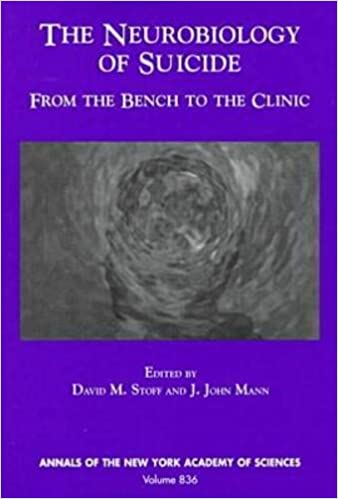The Neurobiology of Suicide: From the Bench to the Clinic

By the late 1990s, a great deal was being learned about the neuroscience of the brain. Magnetic resonance imaging (MRI) became popular in the 1980s, and it was extended to functional magnetic resonance imaging (fMRI) in 1990, which opened up new doors in learning about not just the structure of the brain but also the patterns of neurological firings. As we began to learn more about the brain, it became important to share that with the broader clinical community to encourage research-informed care. The Neurobiology of Suicide: From the Bench to the Clinic, published in 1997, was a step towards that goal.
Adverse Childhood Experiences (ACE)
In 1996 and 1997, the people who would participate in the landmark adverse childhood experiences (ACE) study were just being selected. The long-term follow-up would continue for years. However, it’s an understanding of the developing awareness that people with trauma– or even instability – in their childhood would have problems in their adult lives. (See How Children Succeed for more on the ACE study.)
The language of the book is “chaotic” family situations – the kinds of trauma and instability the ACE study was destined to find later.
Suicidal Behavior Family Clusters
One of the places where the answers get fuzzy is when the book claims that suicidal behavior clusters in families – like so much else in psychiatry. Here, the evidence proposed is a twins study: the twins who are paternal (coming from one egg) are compared with those that are maternal (coming from two eggs). The concept is straightforward. If they came from one egg, then they have the same genes, and therefore we can say that there is a genetic cause to something if both members of a twin pair are affected.
However, as Judith Rich Harris carefully explains in No Two Alike and The Nurture Assumption, there are many other confounding variables that tend to make all twins alike. The environment that the children are raised in matters. In other tests, even identical twins diverge in their interests sometimes – and sometimes not.
There seems to be some evidence that genetics play a factor in suicide – but no more than the typical 50% genetics, 40% environment, and 10% unknown that we often see for anything else in psychiatry. So, it may be true that there are clusters of suicides around family trees, but it’s not necessarily clear whether this is due to genetics, cultural cues – both societal and familial – or something else entirely.
Like many things in suicide research, just because there’s a correlation there is not necessarily a causation.
Low Base Rates
In Rethinking Suicide, Craig Bryan explains why prediction may be a fool’s errand, and that reason is a low base rate. To be an effective screening tool, it would need to be substantially more precise than any of our existing tools for any mental illness. It’s like trying to shoot a 9” plate on the Moon – technically possible but very technically challenging. It’s no surprise, then, that in 1997, it was explained that the tools of the day weren’t very predictive.
Behavioral Intent
The challenge with whether something is – or isn’t – a suicide often hangs on the idea of intent. Did the person intend to strike the tree with their car, or did something else happen? It’s incredibly hard to know if someone was truly intending the accident or whether it just happened. Who is to say it wasn’t texting and driving instead of a willful act? There is no way to know for sure. While it’s possible to guess – through a psychological autopsy (see Review of Suicidology, 2000) – that doesn’t mean that the psychological autopsies are foolproof.
Given the very low incidence of people writing suicide notes (<25%), it’s no wonder that the question of intent during accidental circumstances can be so challenging.
Research
The real challenge that was facing researchers in the late 1990s was that the degree of risk that researchers’ institutions were willing to take for suicide research was very low. This often prohibited the researcher from doing the best science they wanted to do, and instead hamstrung them into research approaches that were less clinically demonstrative for the sake of lowering the risk.
Funding was also a challenge, as other conditions like cancer and AIDS were receiving substantially more funding.
In the end, The Neurobiology of Suicide is a good map of the headwaters of what we were starting to learn about neuroscience and suicide.
